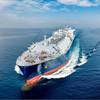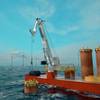Austal Releases Statement on MES
Currently, marine authorities require Austal to undertake a full or partial deployment and evacuation trials for each new vessel we build. Owners/operators are required to periodically repeat this process. The performance of the same MES system in essentially identical installations, as proven in earlier trials, is not taken into consideration. Proper planning and briefing of the personnel involved, and the implementation of appropriate safety precautions, aids in reducing the risk associated with individual deployment trials. Austal’s view, however, is that a further and substantial reduction in the total risk could and should be achieved by reducing the number of full evacuation trials that are required by marine authorities, and that this would not reduce passenger safety in the event of an incident in service.
An MES design that has been previously successfully tested has already demonstrated its ability to transfer passengers from the muster station into the liferaft, and established the evacuation rate that can be achieved using that system. This is independent of the vessel to which it is fitted. If MES systems were type approved and certified for a given passenger transfer rate (through an initial trials or trials) then it should not be necessary to undertake a full evacuation trial on subsequent vessels. This would eliminate the need for people to actually evacuate from the vessel to the liferafts, which is the process with which the greatest risk of injury is associated. Instead, it would only be necessary to demonstrate the suitability of muster areas on the vessel and prove the flow rate of passengers to the MES muster station (this would arguably be unnecessary on sister ships or those with substantially the same internal layout) and the proper functioning of the MES operating system, which can be achieved through a deployment trial. Periodic repetition of the deployment trial demonstrates the system’s ongoing function, as well as providing crew training opportunities, without the need to expose significant numbers of people to an injury risk as is presently the case with full evacuation trials. Where necessary evacuation drills involving a minimum number of people could be conducted to provide crews with experience in assisting passengers to use the MES system.
As an industry leader, Austal Ships feels it is important to contribute to rational discussion and policy development on this important issue, with a view to finding an alternative to the current system of MES testing. We hope that the publication of this statement in your journal will assist in raising awareness and interest in this issue within the ferry industry and, ultimately, contribute to preventing unfortunate and unnecessary accidents such as that of last October.












